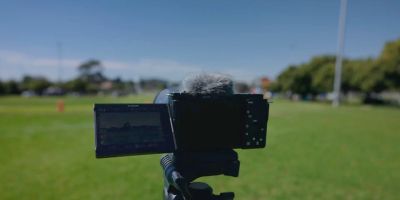
- Understanding-Dramatic-Lighting-in-Nature-Photography
- Key-Techniques-for-Capturing-Dramatic-Light-in-Nature
- Equipment-and-Settings-to-Enhance-Dramatic-Lighting-Effects
- Real-Life-Examples-and-Stories-of-Dramatic-Nature-Photography
- Where-to-Find-the-Best-Products-for-Nature-Photography
1. Understanding Dramatic Lighting in Nature Photography
When it comes to nature photography, lighting is more than just a technical element—it’s the soul of the image. Dramatic lighting transforms ordinary scenes into breathtaking visual stories by emphasizing contrasts, shadows, and highlights. This type of lighting often occurs during the golden hours—shortly after sunrise or before sunset—when the sun casts a warm, low-angle light. However, dramatic lighting can also emerge during overcast days with heavy clouds or through shafts of sunlight breaking through the canopy, adding depth and mood.
Grasping the concept of dramatic lighting is fundamental for any photographer who wants to elevate their nature shots. It’s about observing how light interacts with the landscape or wildlife and using that interplay to create atmosphere and emotion. Unlike flat or harsh midday light, dramatic lighting provides texture and three-dimensionality that make photographs visually compelling and memorable.
Why Dramatic Lighting Makes a Difference
Dramatic lighting naturally draws the viewer’s eye to the subject, highlighting key details while allowing shadows to add mystery. This effect enhances the storytelling capacity of nature photography, making the scene appear alive and dynamic. For example, a tree illuminated by a single beam of light in an otherwise shadowy forest can evoke feelings of solitude or enchantment.
2. Key Techniques for Capturing Dramatic Light in Nature
To photograph nature with dramatic lighting effectively, mastering certain techniques is essential. These methods not only maximize the impact of light but also ensure your photos maintain a natural and authentic feel.
Timing and Location Matter
Planning your shoot during the golden hours or under changing weather conditions is crucial. Arriving early and scouting locations helps you anticipate where the best light will fall. For instance, positioning yourself so that the sunlight comes from the side can emphasize textures in tree bark or rock formations.
Use of Shadows and Highlights
Don’t be afraid of shadows—they are your creative allies. Play with the contrast between light and dark areas to add mood. This might mean exposing for the highlights to keep bright parts from blowing out, or purposely underexposing to preserve detail in bright spots, creating a more intense atmosphere.
Incorporating Backlighting and Silhouettes
Backlighting occurs when the light source is behind your subject, often creating striking silhouettes or rim light effects that outline shapes vividly. This technique is excellent for photographing trees, leaves, or animals and adds a sense of drama and depth.
3. Equipment and Settings to Enhance Dramatic Lighting Effects
While natural light is the primary tool, certain equipment and camera settings can help you capture dramatic lighting with greater control and precision.
Camera Settings for Dramatic Light
Manual mode is often preferred so you can adjust exposure precisely. A low ISO keeps images clean, while aperture settings around f/8 to f/11 increase sharpness and depth of field. Using spot metering allows you to expose for the brightest or darkest parts, depending on your creative goal.
Filters and Tripods
Neutral density (ND) filters enable longer exposures even in brighter conditions, helping to smooth water or blur movement, which can amplify mood. A sturdy tripod is indispensable for stability during these slower shutter speeds, ensuring crisp images.
Additional Lighting Tools
Although natural light is preferred, reflectors can bounce light into shadowed areas to subtly enhance the scene. Portable LED lights may also be used sparingly to highlight specific features, but care should be taken to preserve the natural ambiance.
4. Real-Life Examples and Stories of Dramatic Nature Photography
Consider the story of renowned photographer Michael Kenna, whose black-and-white landscapes thrive on minimalist compositions and powerful light contrasts. His work shows how careful observation of light and shadow can turn a simple scene into a powerful narrative.
Another example is the viral series of photos taken after a storm, where broken tree limbs and sun rays combined to create striking contrasts of destruction and hope. These images captivated audiences by revealing nature’s duality through dramatic lighting.
Drawing inspiration from these cases can encourage photographers to experiment boldly with lighting in their own outdoor sessions.
5. Where to Find the Best Products for Nature Photography
To successfully photograph nature with dramatic lighting, having the right gear is crucial. From cameras and lenses optimized for outdoor conditions to filters, tripods, and lighting accessories, quality equipment makes a significant difference.
Photo Studio offers a curated selection of products designed to meet the demands of nature photographers. Whether you are a beginner looking for versatile gear or a professional seeking specialized tools, Photo Studio can help you find the best equipment, lighting solutions, and accessories tailored for dramatic nature photography.
Exploring their range can elevate your ability to capture the elusive and captivating beauty of nature’s dramatic light, empowering you to create images that truly stand out.





